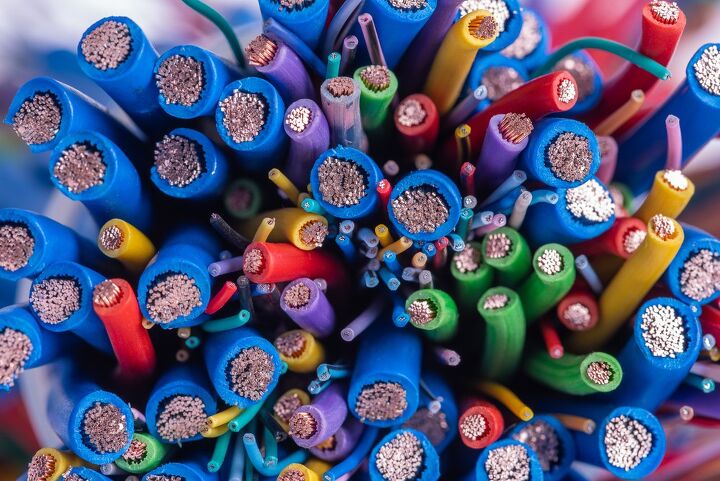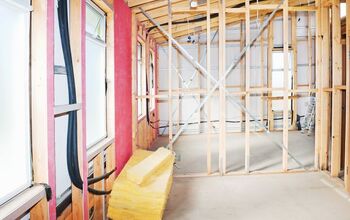Why Is Electrical Wire So Expensive? (Find Out Now!)

Whether you’re in the midst of a new construction project or rewiring a house, purchasing electrical wire is a must. The overall price of wires varies based on material and square footage, but there’s more to the story, too.
There are many different things that will factor into why electrical wire is so expensive, especially at this point in time with COVID-19 as an external factor. First and foremost, tariff pressures and the results of the pandemic have significantly raised the cost of electrical wiring across the board. Other factors include the wire material and how much of it you need.
In this article, we’re going to go over what is making electrical wiring expensive right now and what impacts the overall cost in general. Let’s dive in.
Do You Need Electricial Wiring or Panel Upgrade Services?
Get free, zero-commitment quotes from pro contractors near you.

A Look at Electrical Wires in 2019, 2020, 2021, and So On
When discussing the cost of electrical wiring, it’s important to talk about what’s going on now in light of COVID-19 and even a bit before it. Back in 2019, there was a spike in the price of copper wires. Then, it stayed steady for almost two years.
At the end of 2020, prices began to rise again, and they have continued to do so as we’re about to close out 2021. Experts analyzed market conditions and found four main factors for these price influxes: tariff pressures, supply and demand, and transportation costs. Let’s take a closer look at these factors.
Tariff Pressures
Before the pandemic was even an issue, the cost of copper, aluminum, and steel-based materials were already on the rise due to tariff pressures. The introduction of COVID-19 happened to come along shortly after and made things even more expensive much quicker.
Supply and Demand
It’s no secret that the pandemic had a major impact on industrial manufacturers and factories, especially since those jobs could not be done remotely. Health requirements and lockdowns delayed and even stopped production of many materials, including copper, aluminum, and steel.
In the wake of the pandemic recovery, these already stressed supply chains are depleting extremely quickly. Thus, prices are inflating at an extremely rapid rate. Plus, the prices of the raw materials are directly impacting the cost of the materials they are made into. In this case:L electrical wiring
Transportation Costs
Finally, the transportation of these materials will impact the overall cost of buying them. Suppliers have to pay these costs, so they end up charging more to offset those costs and are able to still make a profit. At the end of the day, the consumer always ends up getting the short end of the stick since they’re at the bottom of the chain.
Types of Electrical Wiring
Typically, electrical wires will be made from three different materials: copper, aluminum, or steel. There are also countless types of cables that you can use throughout your home. Each kind is also associated with varying average costs per linear feet. See for yourself:
Shielded Twisted Pair Cables
These types of cables usually cost between $0.20 and $0.35 per linear foot. It consists of a pair of twisted wires that can be used for telephones, security cameras, and gaming equipment. Shielded twisted pair cables are usually in older homes as fewer homes have landlines or cameras with wiring.
Multi-Conductor Cables
Multi-conductor cables also cost between $0.20 and $0.35 per linear foot. They have more than one conductor and each are separately insulated. These cables can be used for security systems, video recorders, and as part of a home’s entertainment setup.
Coaxial Cables
Coaxial cables are double insulated with an inner tube and outer insulator. They cost between $0.25 and $0.35 per linear foot on average and are used for TVs and video equipment to get most paid TV programming and some internet types. You’ll also usually find them in older homes as they’re being replaced by newer systems.
Direct Buried Cables
Direct buried cables usually cost between $0.40 and $0.50 per linear foot. This is a type of coaxial cable that is uninsulated and is meant to be buried underground. It is ideal for high-speed transmissions and is less prone to issues with storms since they are underground.
Metallic Sheathed Cables
These cables are often known as BX or AC cables and are used in high-stress areas. They use three plain copper wires with PVC bedding and sheathing, typically costing between $0.50 and $0.70 per linear foot. They can be used for both interior and exterior work but are not used as often as nonmetallic sheathed cables.
Nonmetallic Sheathed Cables
Nonmetallic sheathed cables average between $0.60 and $0.80 per linear foot. They are flexible cables with two to four wires and a ground wire. They can be used anywhere inside your home, especially to update older wiring.
Ribbon Wire Cables
Ribbon cables are flat, made of parallel wires, and have a very low voltage. People commonly use these types of wires for computer equipment, printers, and other office equipment. They usually cost between $1.50 and $2 per linear foot.
Underground Feeder Cables
You can expect to pay from $0.50 to $0.70 per linear foot for an underground feeder cable. These are waterproof cables that are made from many wires embedded in plastic. Most often, they are used for outdoor lighting. They run from your circuit breaker out of the house by tunneling underground.
Cost to Hire an Electrician
Typically, electricians charge between $40 and $100 per hour. Wiring a single room in your home may take a day or two while rewiring an entire house will take up to a week. They also may charge per square foot, which will range from about $3 to $8 per sq. ft. depending on what type of wiring you need.
They also may offer an overall rate for the entire project. For example, a 1,200 square foot home with about 285 feet of electrical wiring will cost between $2,500 and $6,000. However, if you need to undergo any additional renovations to open up the walls, it can actually be closer to $6,000 to $10,000.
Different Parts of the House Wiring
On top of the wires themselves, the system that provides electricity to your home is made up of many different components. When it comes to wiring a home, many of these components will be included in the final cost. Others may have separate costs. Regardless, it’s useful to know about all these different parts, which is why we’re going to go over each of them here.
- Cable jacks connect with a TV to provide you with cable and sometimes internet.
- Circuit panels feature switches that connect and break the current to all the rooms throughout a home. Their purpose is to disconnect the power during an overload to avoid safety issues and permanent damage.
- Conduits are tubes that contain the cables or wires. They are made from metal or PVC, and their purpose is to protect the wires.
- Electrical outlets are the parts you see in your house. It’s the point where you plug your appliance in.
- Electrical tails connect your home’s electrical meter to the power grid. Your power company must be the one to install and update it.
- Ethernet jacks are connection points for communications from computers or any other electronics.
- The main earth is in an electrical circuit and measures power. It is physically connected to the ground from your circuit panel. Amidst the red and yellow wires, the main earth is the green one.
- Switches allow you to turn power on and off in specific places throughout your home. They control your lights and other appliances plugged into an associated outlet.
Related Questions
How are cables different from wires?
Cables are insulated wires that have a protective casing. They are used for transmitting electricity or signals. While a wire is one electrical conductor, a cable is multiple. Basically, it’s a group of wires.
How long does house wiring usually last?
Barring any malfunctions or extreme issues, the wiring in your house can last anywhere from 20 all the way to 100 years.
How much do electrical inspections cost?
If you need an electrician to come in and inspect your electrical system, you can expect to pay between $125 and $250.
Do You Need Electricial Wiring or Panel Upgrade Services?
Get free, zero-commitment quotes from pro contractors near you.

So, Why Are You Paying So Much for Electrical Wiring?
All types of electrical wiring are getting more and more expensive, which is something to be aware of if you’re getting ready to wire your home. These days, you’re most likely paying more for electrical wiring due to the negative impacts from COVID-19. However, other factors that will affect the overall cost of the electrical wiring you buy, namely including the material and how much of it you need.

I am a copywriter and editor based in the Las Vegas area with nearly a decade of experience under my belt writing landing pages, cost guides, blog posts, newsletters, case studies, and social media content. I have a degree in Strategic Communication and experience working in both the account and creative spheres. My goal is to always be discovering new interests and bettering myself as a writer and editor along the way.
More by Kerry Souder



























